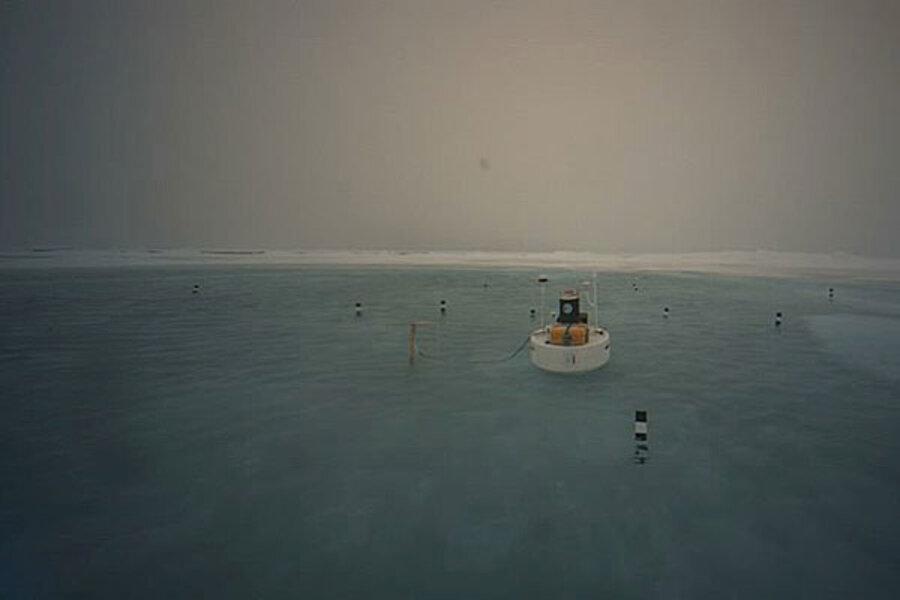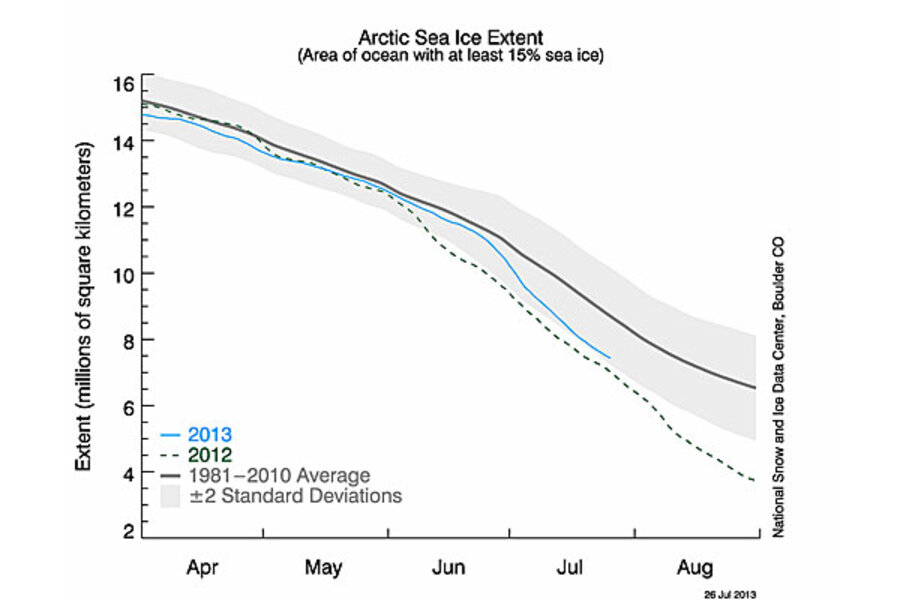New lake at North Pole? More of a pond, really
Loading...
The online buzz over a new "lake" on the North Pole as the latest symbol of global warming is mostly hype.
Yes, there is a new foot-deep body of water in the Arctic. But this isn't unusual. This is another Arctic pond caused by seasonal (summer) warming. And the camera lens distorts the size.
"I have seen much more extensive ponding," James Morison, the principal investigator for the North Pole Environmental Observatory told The Atlantic. "Because we use wide angle lenses the melt pond looks much bigger than it is."
Note the use of the word "pond" to describe this body of water.
The Atlantic goes on to note that last summer's Arctic ice melt was one of the worst, and this year's hasn't been as bad, so far. The now-famous pond was the result of an early July heat wave.
"While the rate of Arctic sea ice loss is normally fastest during July, the warmest month of the year, ice loss was even faster than usual over the first two weeks of July 2013," according to the National Snow and Ice Data Center. "Compared to the 1981 to 2010 average, ice extent on July 15, 2013 was 1.06 million square kilometers (409,000 square miles) below average."
Still, global warming is taking a toll on the Arctic, say most scientists. As the National Oceanic and Atmosphere Administration 2012 Arctic Report Card states: "Large changes in multiple indicators are affecting climate and ecosystems, and, combined, these changes provide strong evidence of the momentum that has developed in the Arctic environmental system due to the impacts of a persistent warming trend that began over 30 years ago."
And as The Christian Science Monitor noted this week, it's not the creation of Arctic ponds that's worrying – it's the release of methane gas. The release of Arctic methane gas due to warming trends is an "economic time bomb," which could cost the world $60 trillion. Yes, that's trillion – the equivalent of the world's entire economic output in 2012.
"The Arctic ice stores roughly 50 billion tons of methane, a concentrated gas some 20 times more powerful than carbon dioxide. Over the past few years, scientists have observed the gas pluming from the region’s thawing ice. That raised the question: even as profits are hauled in from shipping and drilling in the Arctic, could that methane gas be waiting to undo all those gains? Could the toll of that released gas far outweigh the rewards of melting Arctic’s ice?"










